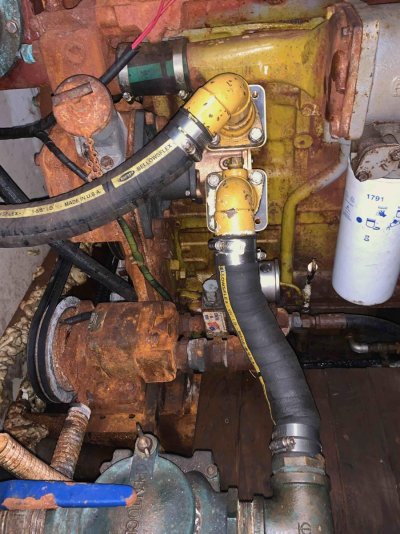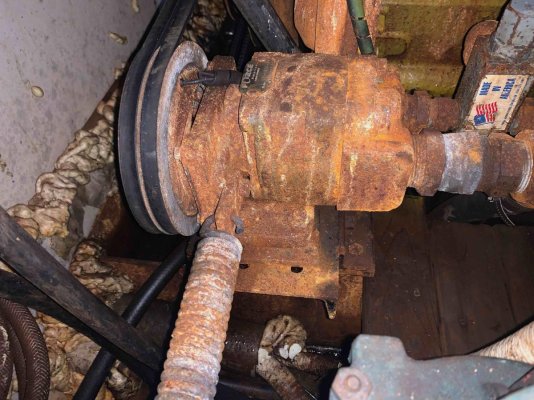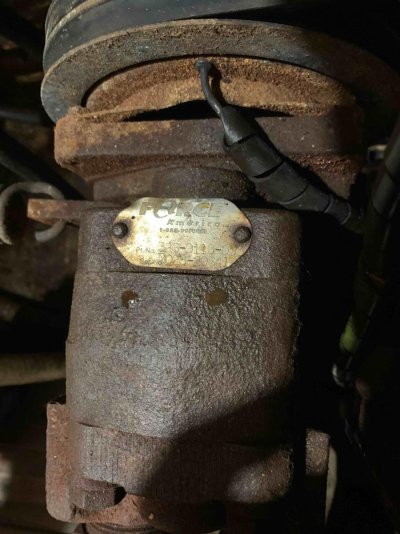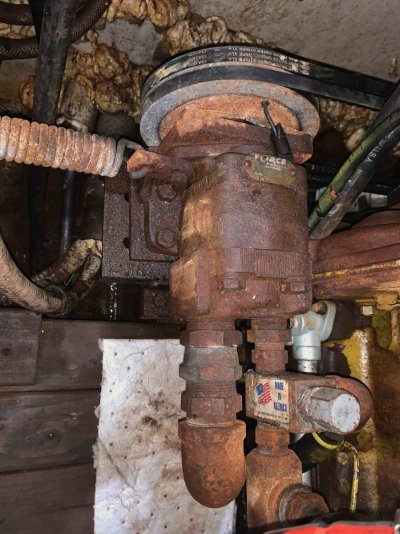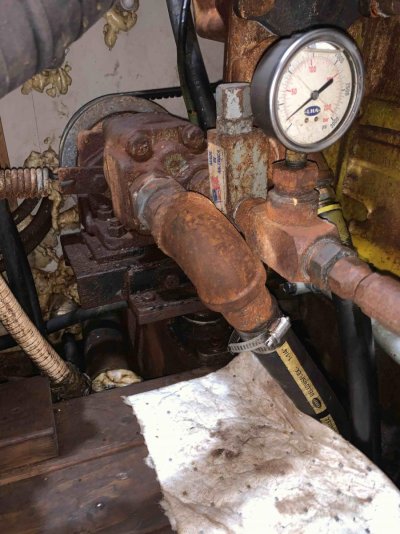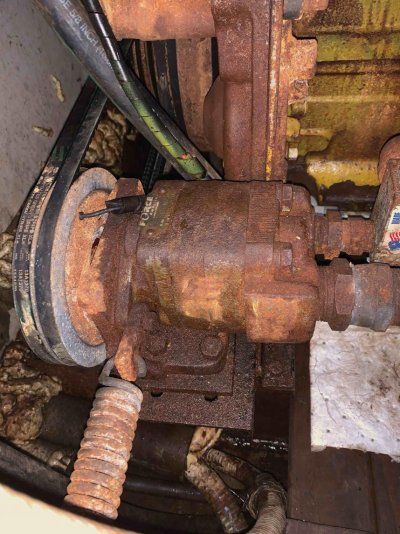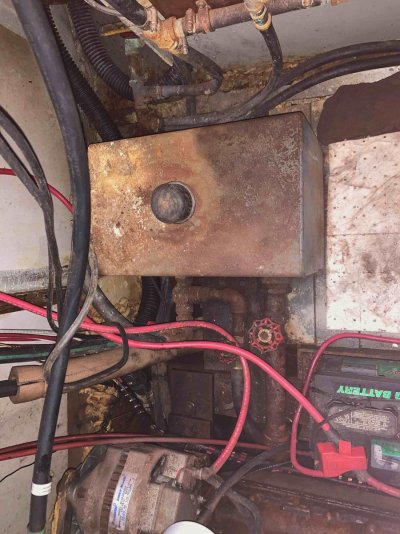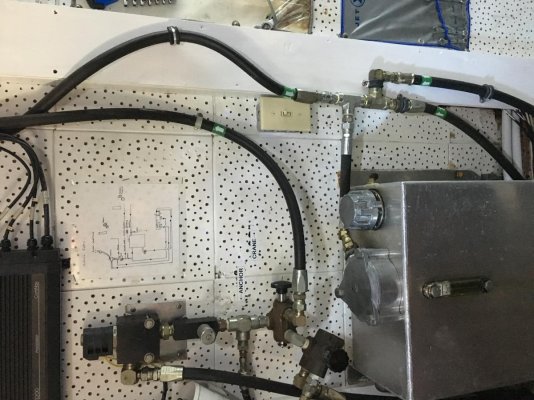LeoKa
Guru
- Joined
- Apr 15, 2017
- Messages
- 1,150
- Location
- USA
- Vessel Name
- Ironsides
- Vessel Make
- 54' Bruce Roberts steel sailboat hull, coastal LRC, 220HP CAT 3306.
My bow thruster and anchoring is hydraulic. Yesterday, both stopped working. My hyd pump is Force America and it is belt driven from the main. The pump was giving screeching sounds for the last couple months. I was planning to replace the belts, as I suspected to be the source of the problem. I think it was not it.
I think I need to replace my pump, as a rebuilding would be difficult to get, or found.
Anyone could guide me on the process, if I purchase a new pump/clutch? I am asking about preparation and taking it apart. Assembly and bleeding procedures.
I’ll attach some photos.View attachment 107562
Disregard the rust please. That is a result of a different disaster.
I think I need to replace my pump, as a rebuilding would be difficult to get, or found.
Anyone could guide me on the process, if I purchase a new pump/clutch? I am asking about preparation and taking it apart. Assembly and bleeding procedures.
I’ll attach some photos.View attachment 107562
Disregard the rust please. That is a result of a different disaster.
Attachments
Last edited:

